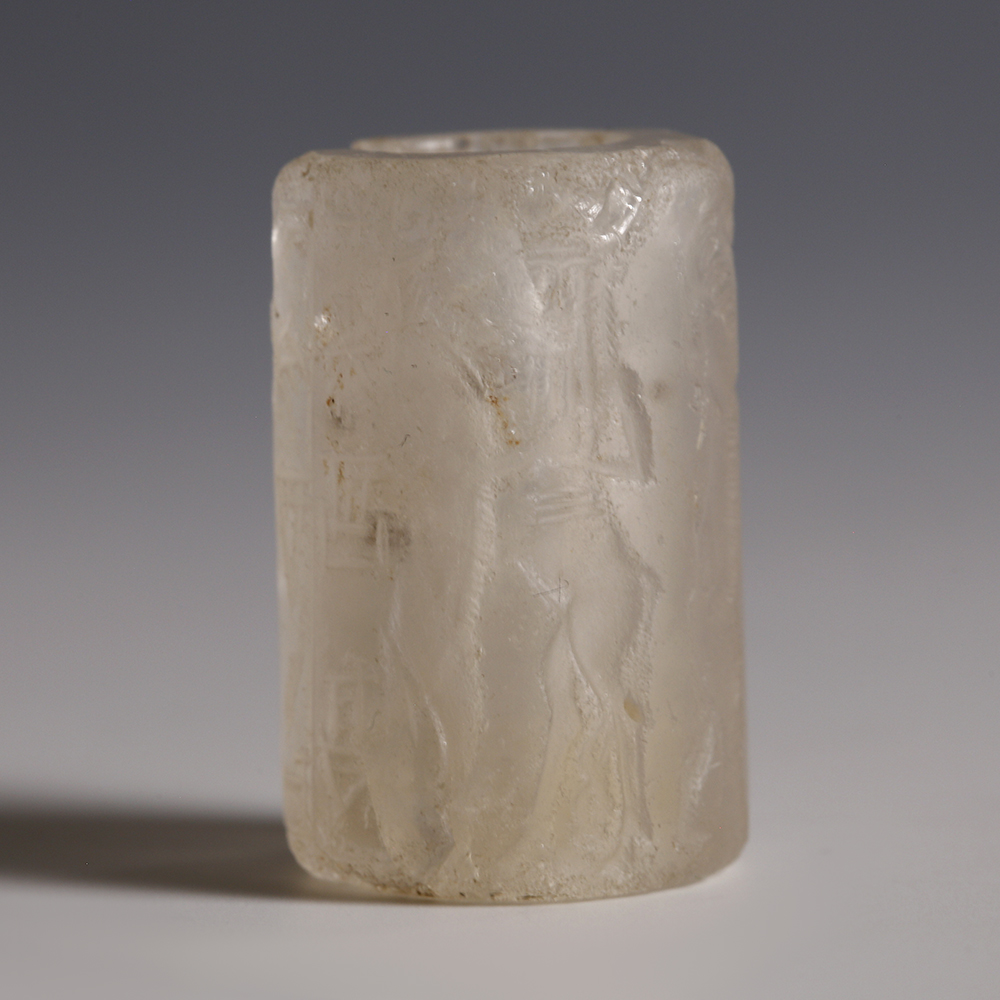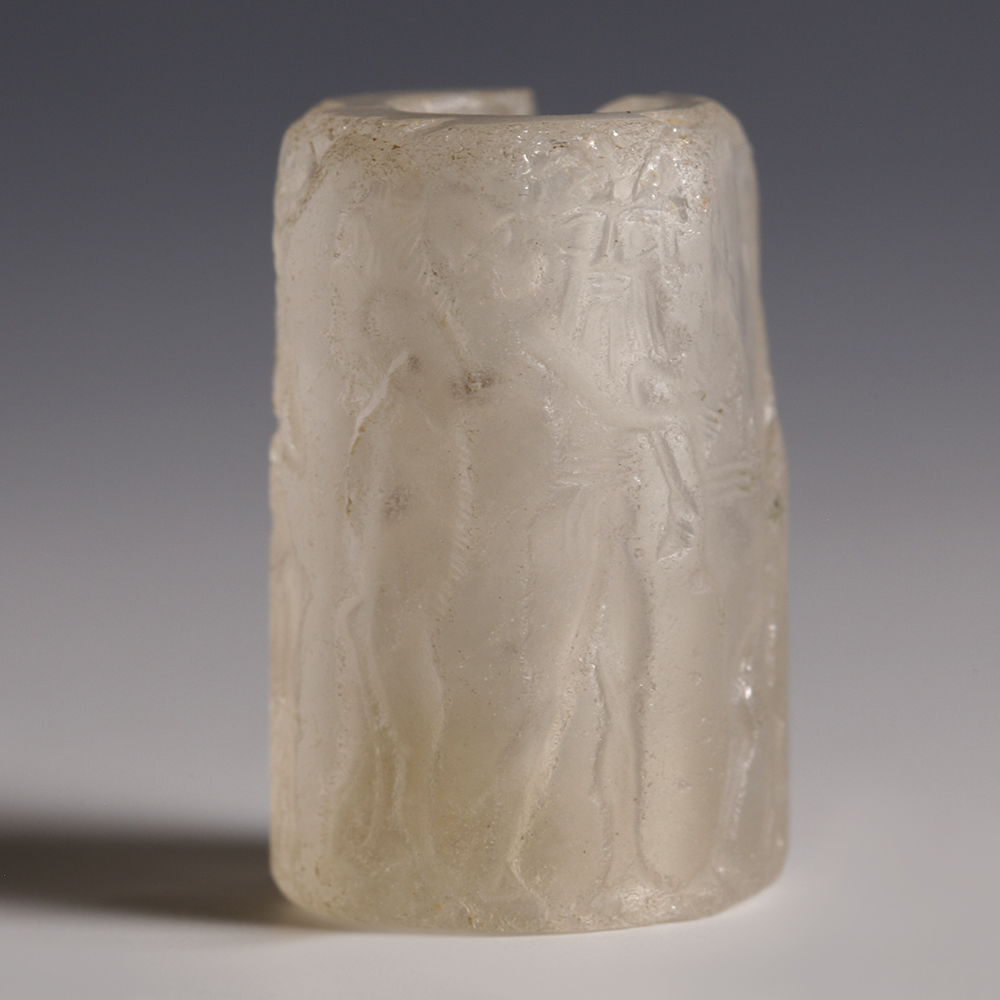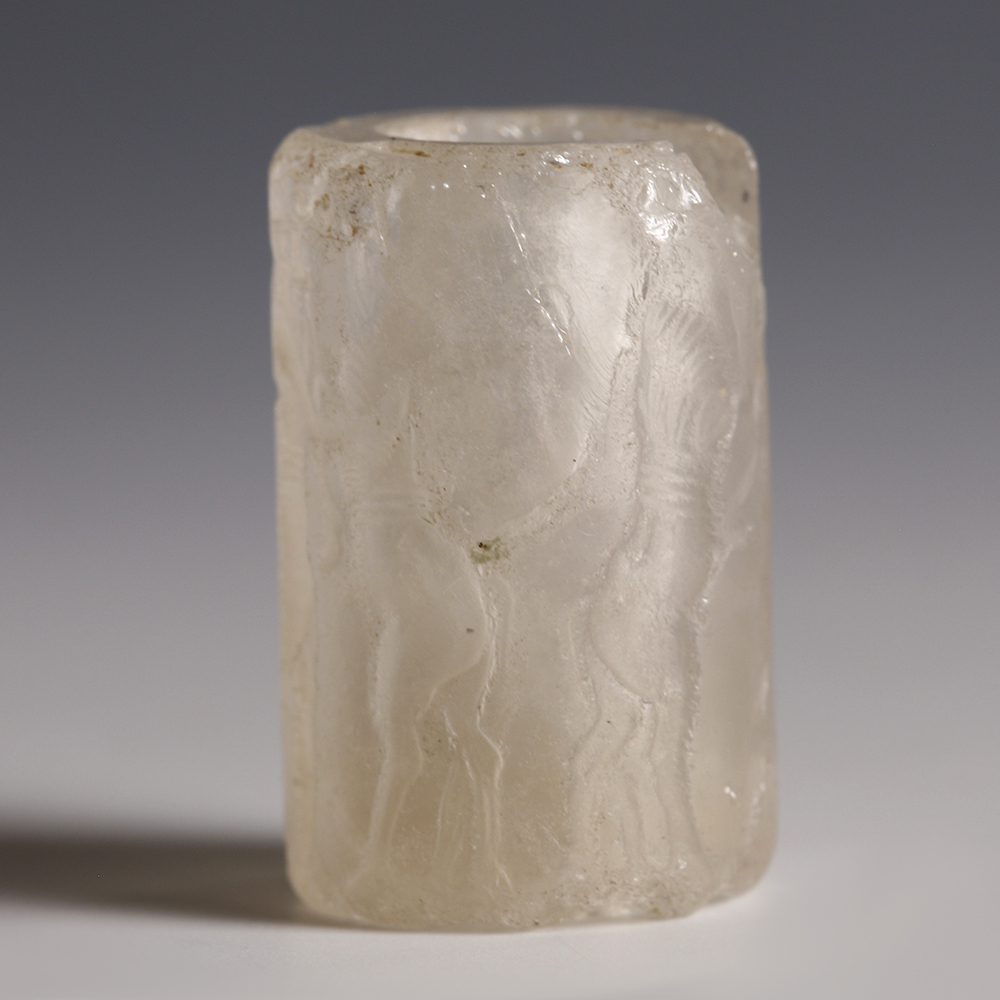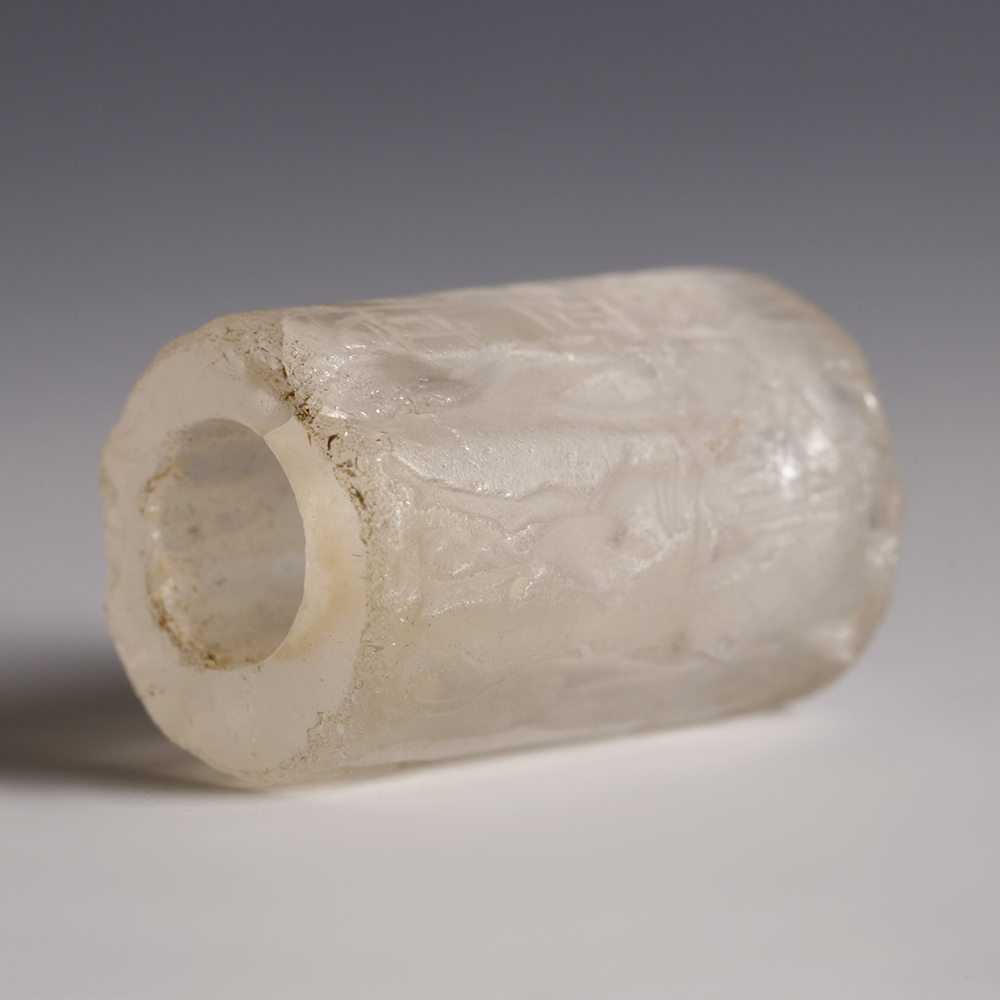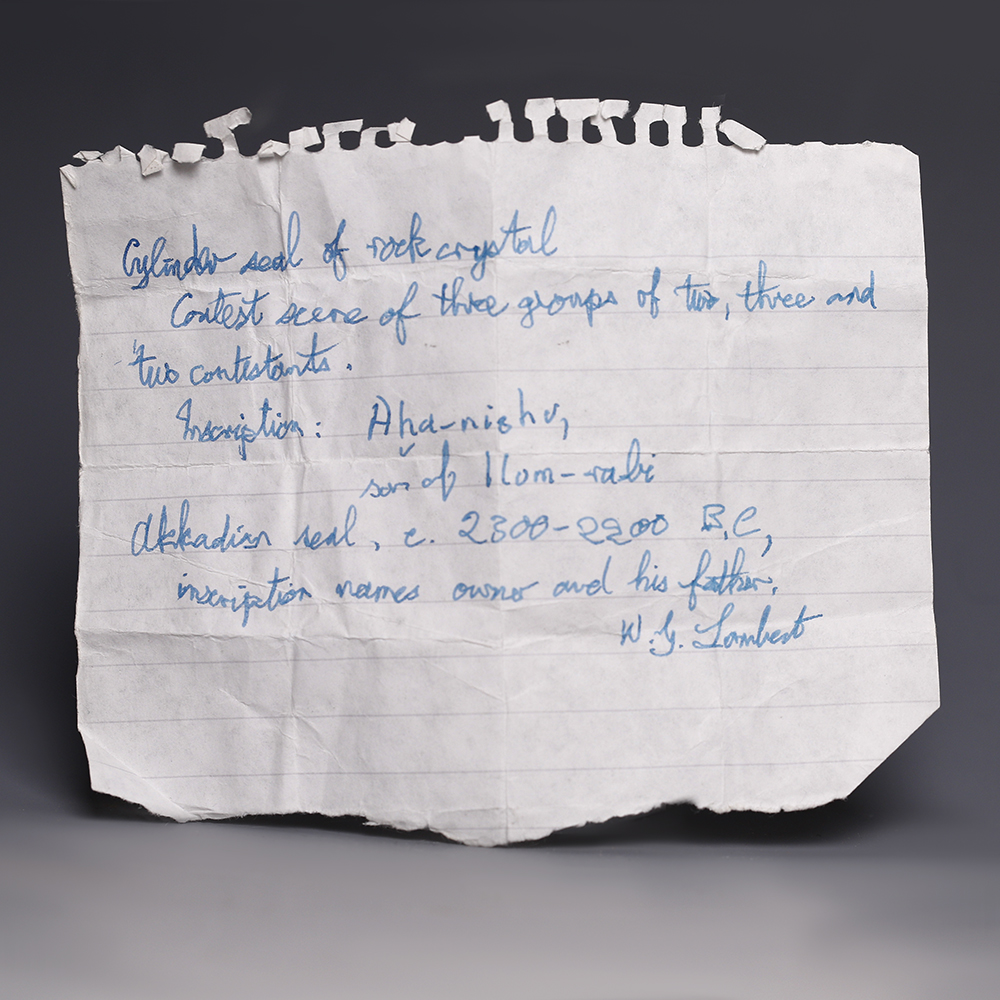Mesopotamia has been regarded as the cradle of ancient glyphic arts as the earliest cylinder seals were proven to be first executed in Bronze Age Mesopotamia. The earliest cylinder seals can be dated as early as the fourth millennium BC. Since the fashion of engraving naturalistic images on precious and semi-precious stones began (circa 3500 BC), each following historical period contributed significant value in terms of aesthetic styles and technical developments to revive Mesopotamian glyphic arts.
The Akkadian Empire was the first ancient Semitic-speaking empire of Mesopotamia, centred in the city of Akkad and its surrounding region. With the Akkadians a new style of seal emerged; inscriptions became the central focus with the scene organized around them, and human figures became more realistic and sculptured.
